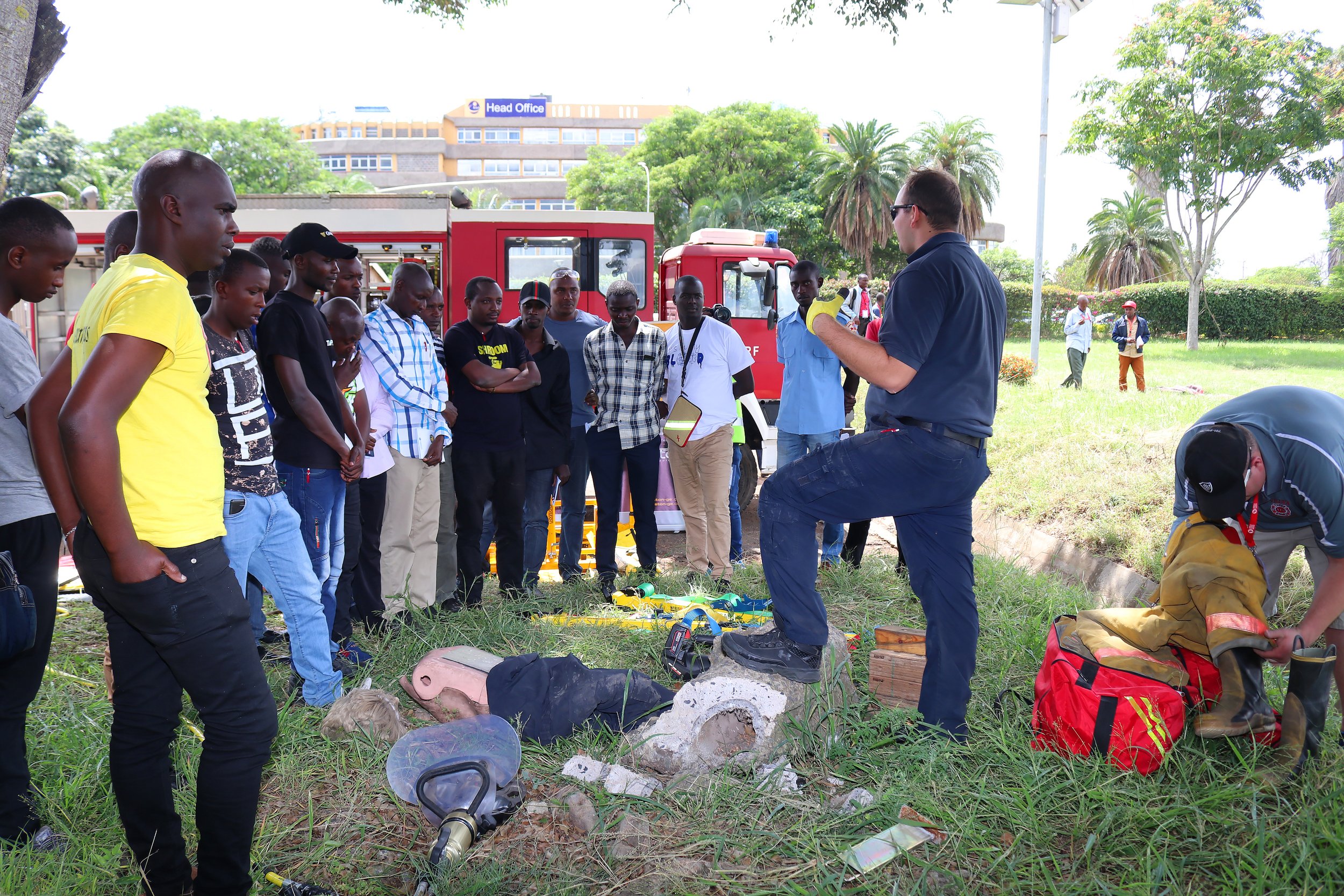by Tyler Prater
Water rescue operations are a very dangerous, highly technical operation. With water covering over 70 percent of our world, as first responders we are bound to respond to a water emergency. One of the biggest hazards is flash flood and swiftwater emergencies. Swiftwater is described as water moving more than 1 nautical mile per hour (Knot). NFPA 1006 standards breaks swiftwater rescue into 3 parts.
1. Awareness, meaning that the responder is aware of the hazards but is not trained to mitigate.
2. Operations, meaning that responders can take a defensive role using throwbags or throwable flotation and have been trained in self rescue defensive swimming techniques.
3. Technician level training, meaning that the responder is equipped and properly trained to respond to in water emergencies using a “Go” rescue.
It's also important to note the water rescue order of operations. Remember the saying “Reach, Throw, Row, Go.”
Reach - To reach for the victim trapped in the water. Long Sticks, ladders, poles, or anything sturdy enough to reach into the water to get to the victim.
Throw - Throw a rope or a flotation device to your victim trapped in the water.
Row - Use a boat to row your way to the victim.
Go - The most dangerous and last resort in water rescue: to send a rescue swimmer into the water.
As in all rescue operations, PPE is an especially important factor for water rescue. Making sure anyone operating near the water knows how to swim and has proper flotation in place. If making a “Go’ rescue it is imperative that the PFD the rescuer is wearing has enough flotation for both the rescuer and the victim. When responding to emergencies in fire apparatus, remember that we are not invincible to the power of water. It only takes a few inches of water to float and move a vehicle. Turn around, don't drown. Flood water is also a known health hazard. As water floods a village or city it picks up all waste and hazardous materials and flows it across the city. If vehicles or sewage facilities are involved, fuels and biohazards could enter the water. Treat all flood water as hazardous water and make sure to thoroughly decontaminate your body and all equipment used in the water. Multiple bystanders die each year trying to rescue victims in flood water. Tying yourself to a rope that you cannot break free from is also another hazard that is commonly misunderstood. If a rope is tied around a rescuer and that rescuer gets hung up, or reaches the end of the rope the power of the current will push the rescuer under the water.
Understanding and treating water rescue events as a high hazard, low frequency event will make both the rescuer and victim safer in the long run. Public education of the hazards of flash flood and swiftwater hazards is also imperative to preventing water emergencies. Remember to follow your level of training. Rescuers must have the appropriate PPE and resources available to make an in water rescue. For more information on this topic and to learn more about training standards, reference NFPA 1006 - Professional qualifications of technical rescuers, or check out TDISDI.com / ERDI and search for swiftwater rescue.
Tyler Prater is a 8 year member of the St. Louis Fire Department and currently serves as a rescue squad member. Tyler is also a water rescue specialist and instructor for Water and Dive Rescue.




